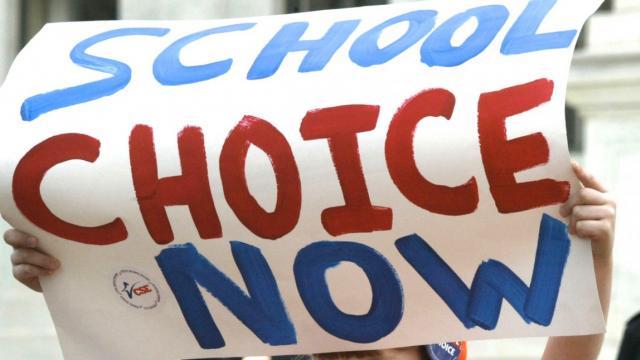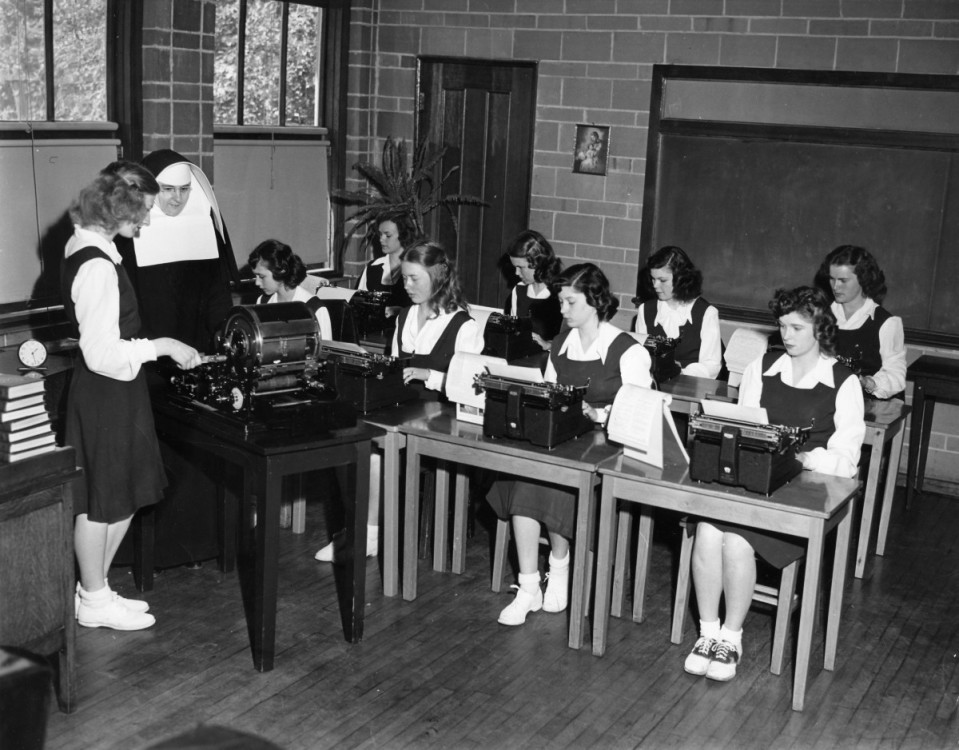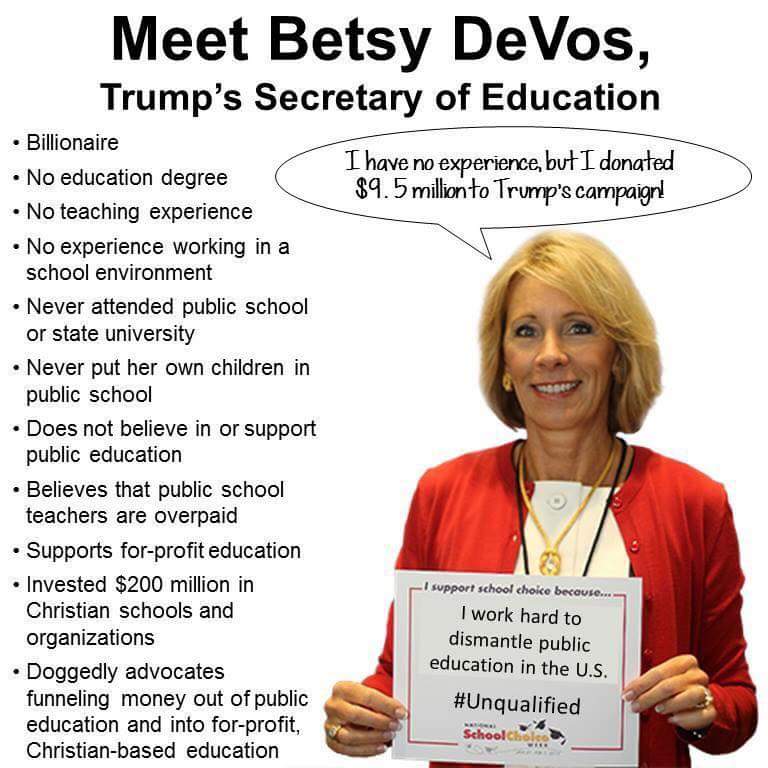
The 2016 elections delivered a massive blow to public education advocates and teachers groups – and no, it’s not only because of the newly-minted president or his bear-fearing education secretary.
Instead, the campaign collapses of several Democrats in state-level races allowed for Republican trifectas in 25 states, up from just 10 states in 2009. Holding majorities across three levels of state governance, Republicans can continue to slash budgets for k-12 education while deregulating urban schools via voucher programs and charter schools.
The incremental expansion of voucher and charter programs may have slowed in recent months, and in some cases fallen off the Republican radar completely. But the greatest threat to public education may not have been in the legislature at all. Rather, it’s in the courts.
States that have sought to aggressively expand voucher programs in recent years have also begun to slowly erode the legal protections for public education funding – including laws that seek to separate state money from religious schools. One particular law has played a central role in these cases: the Blaine Amendment.
Named after James Blaine, a Republican congressman who authored the first version of the amendment in 1876, the initial Blaine Amendment sought to block public money from benefiting religious groups, particularly parochial schools, declaring that “no money raised by taxation in any state… shall ever be under the control of any religious sect.”
Blaine’s original amendment failed at the federal level, but various iterations of the amendment appear in at least 38 state constitutions – though you’ll likely see them generically referred to as “no aid” clauses. The basic logic of the Blaine Amendment – which separates public money from church-run schools – remained unquestioned for nearly a century.
Voucher programs have since changed that.
“Blaine amendments came into focus, really, with the voucher movement, because you’re getting much more money [involved],” said John Witte, professor of political science and public affairs at the University of Wisconsin, speaking in a phone interview.
That money has pushed the battle for voucher expansions into court, where several states have pitted voucher programs against Blaine amendments – and won. Though the Blaine amendments appear simple and straightforward, states with strong Republican majorities have been able to circumvent or, in some cases, disregard their Blaine amendments, said Witte.
To illustrate this phenomenon, he pointed to Indiana, a state with a strong Blaine Amendment on the books. In 2013, when then-Governor Mike Pence proposed an expansion to the state’s voucher program, allowing families already sending students to private schools to collect public money for tuition, the case appeared to violate the state’s Blaine Amendment. Like Indiana’s politicians, however, the state’s justices favored the voucher program, and ruled accordingly.
“They have a Supreme Court there that’s very conservative,” said Witte, “so they didn’t let the Blaine Amendment stand in the way at all.”
Indiana’s Supreme Court, in fact, ruled 5-0 in favor of vouchers, declaring that, since the “primary beneficiaries [of vouchers] were the families that used them,” the public money was not going to private, religious institutions.
This gymnastic approach to voucher programs reveals a crucial dynamic of state courts: they are more overtly political than the U.S. Supreme Court. Moreover, the Blaine amendments, in the words of Marine Corps University law professor Jill Goldenziel, are quite “malleable” in the hands of conservative justices.
These justices have looked favorably on voucher programs, and not just in Indiana. Arizona, Wisconsin, Ohio and Oklahoma have all followed similar paths, distancing themselves from the religious schools benefiting most from voucher programs.
Despite the contention that families are the key beneficiaries of these programs, research indicates the opposite may be true. Students and parents choosing schools have overwhelmingly chosen parochial schools, and while the influx of cash may be a boon for the schools, the quality is anything but guaranteed. In Ohio, for instance, 97 percent of vouchers go to religious institutions, despite evidence that students at these institutions perform on par with public school peers.
Students in Indiana may be getting a radically different education altogether. Chris Kirk, writing for Slate, found that 37 voucher-eligible private schools included creationism in their 2014 curricula. The state also hosts the Horizon Christian Academy, which has received $2.8 million in public money despite one of its campuses failing state standards in back-to-back reviews.
For supporters of public education, much of the damage appears already done, as the decision reached by Indiana’s Supreme Court has set the tone for opposing Blaine amendments. However, the boom in voucher programs is largely due to the Republican state majorities. Colorado’s recent decision to reject a state voucher program shows that Blaine amendments can still be used to block public funding for private education – if representatives and activists on the left can gain enough traction in court.
The small victories for public educators won’t likely dissuade further attempts to expand voucher programs, though. In lieu of a U.S. Supreme Court decision, Witte expects to see a continued push for vouchers. “You’re going to see some [expansions] right in the face of the Blaine amendments,” Witte said, “and I think we’re going to see some serious challenges coming up.”
3 WAYS TO SHOW YOUR SUPPORT
- Log in to post comments















